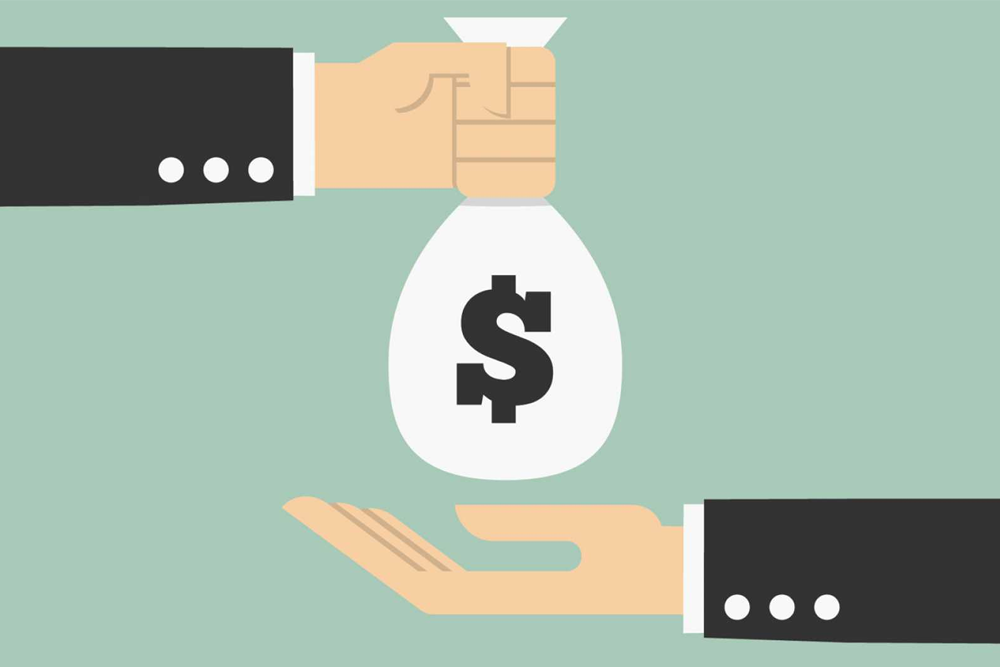
If you feel overwhelmed about saving money, you are not alone. Whereas some may think saving money is comparatively straightforward, one in five Americans has nothing saved at all. So although spending cash is arguably more exciting, you should consider saving money a priority. And there are various ways to save money that do not engage in making sacrifices, either. Sometimes the best way to begin saving money is simply to become more aware of your finances and spending behavior. With an understanding of your budget and true needs, you might start putting away more money than you ever anticipated.
To save money effectively, you should consider both long-term strategies such as paying down debt, and short-term tactics such as skipping the cocktail at a restaurant. In contrast, you might not be able to evaluate all your spending behaviors overnight; with time and consistency, anybody can learn how to put money aside. Whether you are looking to start saving for the future or are only looking to be financially savvy right now, there are various reasons that you might struggle with saving. Continue reading for some practical money-saving tips, or simply jump to the section that is most useful to you.
Why is saving money important?
Not unless you were born with a silver spoon in your mouth or you are fabulously wealthy, large expenses in your life will likely need planning to purchase. Before you start saving, define what you are saving for, to help you keep track of avoiding unnecessary purchases. For instance, if you remember that you aim to save $200,000 over the next ten years in your child’s school fund, it will be easier to stay in that line.
Also, consider that you might need to save up for pricey necessities such as a car or home. The average American will possess a total of six cars in their lifetime. Thus it might be a good idea to begin saving for your next car now if you currently need one.
Lastly, it is vital to save for retirement from your first job to your last. Following a recent study, most Americans near retirement have only saved twelve percent of the recommended amounts for retirement. This might be because getting to a place where you have additional income to save takes time; however, it may also be due to the fact people do not practice good money-saving techniques from an early age.
To aid you in learning how to save money and attain your financial goals, we have compiled effective tips to save money.
Best tips to save money
To come up with saving strategies, select a budgeting method, choose the right financial institution, and then automate your finances and live a budget-conscious lifestyle.
Step 1: Develop saving strategies and goals
Your first strategy is to set specific goals for yourself- emphasis on specific. Writing down your goals will make them more real to you. It will assist you to resist the temptation to spend your money on other things.
Think of your long term or short-term goals
For the short term, you can save for nice holiday gifts and a real vacation; however, first, save enough money to have a decent emergency fund. For instance, about three to six months’ worth of living expenses, if you run into an unexpected car-repair bill or even lose your job. When it comes to the long-term, this will involve big-picture thinking. Here you will be saving money for your retirement and children’s college fund.
Analyze your income
Write down all your income expenses and figure out how much you can reasonably save. There are possibly more ways to save money than you realize. Do not forget your student loans or credit card debt. Ensure you know how much you are spending in every budget category. Pay close attention to what you are spending on non-essentials, like eating out. A simple way to automate this process is to use Trim. This application will keep track of all your transactions.
Check-in on your credit
Do your credit check. You can use an app such as Credit Sesame. It provides you personalized suggestions for improving your credit. Generally, the better your credit, the better off you will be when you are getting a car or home loan. Credit Sesame can estimate the amount of mortgage you can qualify, for instance.
Step 2: Choose budgeting and debt repayment methods
Start marking a monthly budget and stick to it- particularly if you have debt. This way, you can put savings into your budget. It will never be an afterthought this way. Here are five different budgeting methods.
- Follow The 50/30/20 rule. Split your income into three spending categories:fifty-percent go on essential bills and monthly expenses, twenty-percent toward financial goals, and thirty-percent to personal spending (all the things you like to spend money on but do not need). Put the fund earmarked for your financial objectives into a separate savings account.
- Envelope budget: every month, you utilize cash for different categories of spending, and you keep that cash for every category in a separate envelope- labeled housing, groceries, phone, etc.
- Zero-based budget: This is typically your income you deduct your expenses (inclusive of savings) equals zero. Through this, you have to justify every expense.
- Debt avalanche: In this method, you pay off your debts with the highest interest rates first, most possibly your credit cards. By doing so, you can save you a lot of cash over time.
- Debt snowball: For this debt payment method, you pay off your debts with the smallest balances first. This enables you to eliminate debts from your list faster, which can motivate you to keep going.
Step 3: Select a financial institution and accounts
You might be thinking; you already have a bank. And of course, you do. If you are like most of us, you have had the same bank for years. Most people just figure out it is too inconvenient to switch. But it is worth shopping around for a better option since your bank can make a real difference in how much money you save.
Also, look for credit cards that have less interest. To avoid paying much interest, your best option is to cut back on your expenses and then pay off your balance as soon as you can. Moreover, use the right credit card, based on your situation and needs. Ask yourself if you prefer a credit card that gives you cashback, one that will help you build credit or a balance-transfer card. Moreover, consider paying off your high-interest debt with a low-interest personal loan. It is simpler than you might think.
Step 4: Automate your finances
The best ways to save include automation. You will save time, and we all know time is money. Below are a few money-management strategies you can take today to make sure you will not have to think about cash for more than a few minutes each time.
- Automate your bills: Simply go to your bank’s online bill-pay functionality. Enter all the organizations that bill you and the account numbers for each. Organize to receive e-bills from whichever billers will do that.
- Automate savings: You can use an app such as Digit that calculates how much money you can save. There are also long game savings that combine games and saving money. Check with your bank if they offer automatic savings transfers that will move money from your checking account to your savings account monthly.
- Automate investing: Make excessive use of apps such as Stash, Acorns, Blooom to start investing. They offer easy automatic ways to invest, such as the set it and forget it approach. This will trick your brain into saving.
- Automate budgeting: There are apps for automating your budget. Here are a few: Mint, Medean for iOS, and MoneyLion, just to mention a few.
Step 5: Establish a Budget-Conscious Lifestyle
In reality, to save more money, you will need to spend less money. This not mean you live like a monk. Make sure you are smart and strategic. Below are some tips to help you spend less:
- Save money around the house through DIYs
- Share or find free entertainment
- Plan your groceries
- Use coupons
- Find out if you are wasting money on insurance
- Take public transportation sometimes
Step 6: Make more money
It is simpler to save money if you’re bringing in more money to start with. Below are several ways you can make extra cash at home.
- Share your opinions on surveys: You will not get rich by taking surveys, but if you are just relaxing on your couch, why not click a couple of buttons and earn extra cash. Try sites such as Points and InboxDollars.
- Sell your old stuff: Clear your closet. Use the Dectur application to get paid for your old DVDs, CDs, Blu-Rays, gaming, and video games. You can also sell almost anything via the Letgo app. Simply take a photo of your item and list it for about thirty seconds.
- Look for a side gig.











